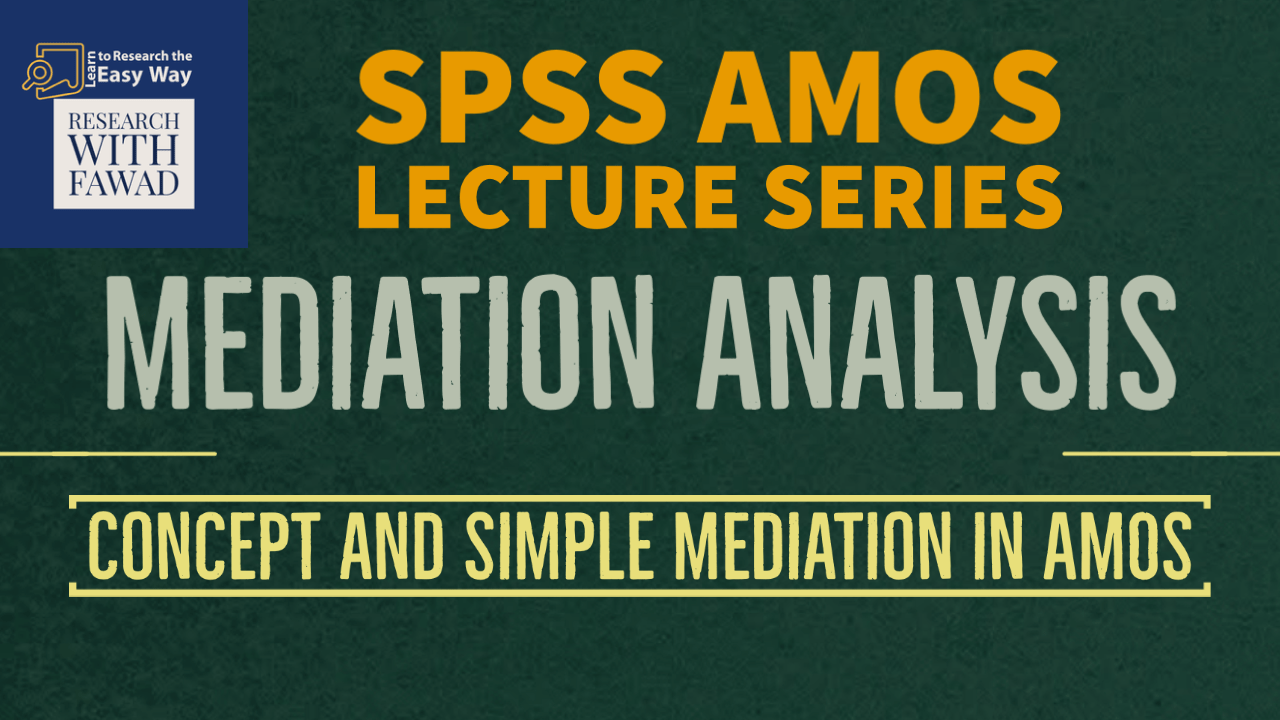
Mediation Analysis in SPSS AMOS
The Focus of the video tutorial is guiding how to designing, interpreting, and reporting a full structural model in SPSS AMOS.

The Focus of the video tutorial is guiding how to designing, interpreting, and reporting a full structural model in SPSS AMOS.
Up to this point, we have focused on how one construct can directly influence another construct in a SEM model.
A direct effect is simply a direct relationship between an independent variable and a dependent variable in presence of the Mediator (c’).
An indirect effect is a relationship that flows from an independent variable to a mediator and then to a dependent variable (a*b).
The term total effect is the combined influence of the direct effect between two constructs and the indirect effect flowing through the mediator (c = c’ + a*b).
Lastly, you can have complementary and competitive mediation.
The Indirect effect of Authentic Leadership (AUL_IV) to LS_DV through Self-Efficacy is .268
Mediation Analysis
The study assessed the mediating role of self-efficacy on the relationship between authentic leadership on life satisfaction. The results revealed a significant indirect effect of impact of authentic leadership on life satisfaction was positive and significant (b= 0.268, t = 6.70, p = .015), supporting H1. Furthermore, the direct effect of authentic leadership on self-efficacy in presence of the mediator was also found significant (b = 0.197, p = 0.000). Hence, self-efficacy partially mediated the relationship between authentic leadership and life satisfaction. Mediation analysis summary is presented in Table 1.